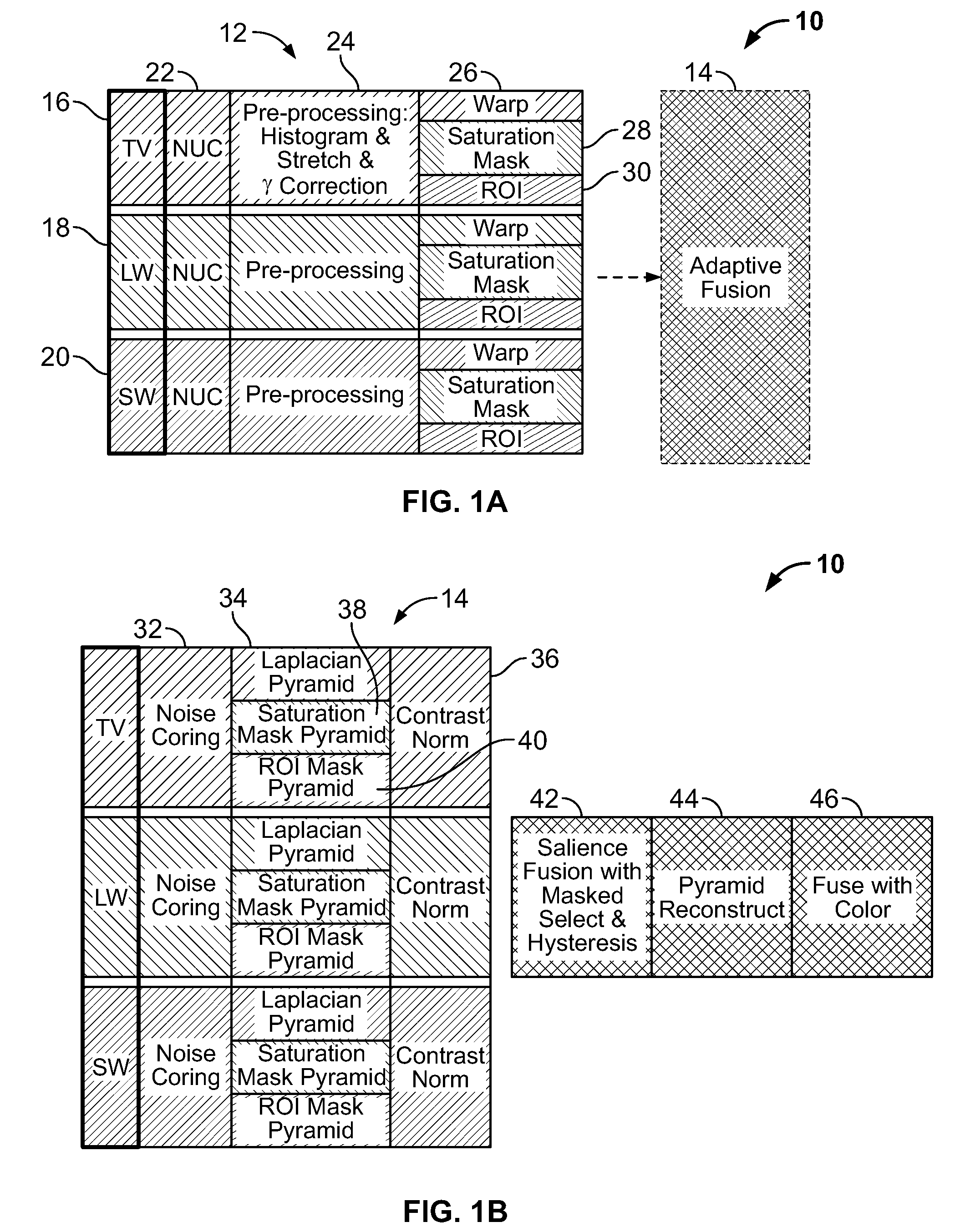Multi-scale multi-camera adaptive fusion with contrast normalization
a multi-camera adaptive fusion and contrast normalization technology, applied in the field of vision systems, can solve the problems of reducing contrast, reducing the effect of flickering artifacts, and reducing current multi-scale featureselective fusion techniques employing laplacian pyramid decomposition/construction, etc., and achieving the effect of reducing flickering artifacts
- Summary
- Abstract
- Description
- Claims
- Application Information
AI Technical Summary
Benefits of technology
Problems solved by technology
Method used
Image
Examples
Embodiment Construction
[0050]Referring now to FIGS. 1A and 1B, block diagrams of a system that employs adaptive fusion for combining images from a plurality of images of different modalities is depicted, constructed in accordance with an embodiment of the present invention, and generally indicated at 10. The system 10 in FIG. 1A includes a section 12 for the preparation of source image data originating from a plurality of modal images 16, 18, 20 (e.g., visible (TV), the long wave (LW) IR and the short wave (SW) IR images) taken by cameras (not shown) that are to be passed to an adaptive fusion block 14 (see FIG. 1B) are distortion corrected and pre-processed before they are warped to align to each other. Distortion correction is performed using Non-Uniformity Correction (NUC) 22 to compensate for gain and offset of each of the pixels of the images 16, 18, 20. The pre-processing enhancements in pre-processing blocks 24 include a linear stretching, uniform histogram equalization, Rayleigh and Gaussian shape...
PUM
 Login to View More
Login to View More Abstract
Description
Claims
Application Information
 Login to View More
Login to View More - R&D
- Intellectual Property
- Life Sciences
- Materials
- Tech Scout
- Unparalleled Data Quality
- Higher Quality Content
- 60% Fewer Hallucinations
Browse by: Latest US Patents, China's latest patents, Technical Efficacy Thesaurus, Application Domain, Technology Topic, Popular Technical Reports.
© 2025 PatSnap. All rights reserved.Legal|Privacy policy|Modern Slavery Act Transparency Statement|Sitemap|About US| Contact US: help@patsnap.com



